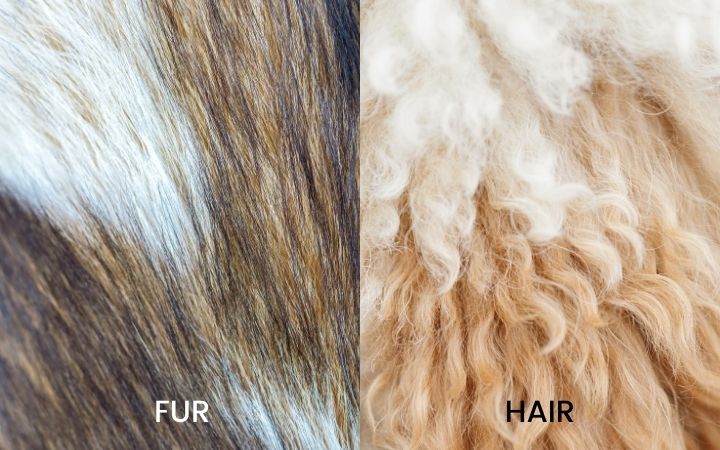Table Of Content

Hair typically has a longer growth pattern, allowing it to grow more extended over time. In the anagen phase, hair or fur is actively growing from the follicles. Hair has great social significance for human beings.[63][64] It can grow on most external areas of the human body, except on the palms of the hands and the soles of the feet (among other areas). Hair is most noticeable on most people in a small number of areas, which are also the ones that are most commonly trimmed, plucked, or shaved. These include the face, ears, head, eyebrows, legs, and armpits, as well as the pubic region. The highly visible differences between male and female body and facial hair are a notable secondary sex characteristic.
About A Moment of Science
For example, the fur of a snow leopard in the Himalayas is thick and pale, perfectly blending with the snowy landscape. This camouflage allows the snow leopard to remain hidden from both its prey and potential predators. Similarly, the stripes on a tiger’s fur help it to blend into the tall grasses of its natural habitat, making it less detectable to its prey. Hair growth and hair bulb are nourished by hormones from the blood vessel’s hair bulb.

Hair in Evolution
Diving into the world of hair and fur, one finds a complex interplay of biology and function. Thin strands that sometimes are almost translucent when held up to the light. Shed strands can be hard to see even against a contrasting background. Fine hair is difficult to feel or it feels like an ultra-fine strand of silk. This is a method which classifies the hair by curl pattern, hair-strand thickness and overall hair volume.
Main Differences between Hair and Fur (in Points)
Two of the largest extant terrestrial mammals, the elephant and the rhinoceros, are largely hairless. The hairless bat is mostly hairless but does have short bristly hairs around its neck, on its front toes, and around the throat sac, along with fine hairs on the head and tail membrane. Most hairless animals cannot go in the sun for long periods of time, or stay in the cold for too long.[15] Marsupials are born hairless and grow out fur later in development. Guard hair (overhair[13]) is the top—or outer—layer of the coat. Guard hairs are longer, generally coarser, and have nearly straight shafts that protrude through the layer of softer down hair.
In some species, fur also plays a pivotal role in camouflage, enhancing an animal's ability to blend into its environment, thereby facilitating hunting or eluding predators. "I’m not sure that the hair versus fur distinction is always made in other languages," MacPhee says. "Humans universally only have hair, right? Not fur, even though there is no important way to distinguish the two. The differences are arbitrary."
Composition

This nourishment is crucial for the health and vitality of the hair or fur, ensuring its strength and shine. Telogen, or the resting phase, is the final phase in which the growth of hair ceases to rest and the hair shreds from the hair follicle. The rate of hair growth is different for everyone, and its average rate is approximately one-half inch in one month.
Each hair shaft emerges from a hair follicle, embedded within the skin, and extends outward. The texture and characteristics of hair can vary significantly among species, from the fine, straight hair of humans to the coarse, curly hair found in other mammals. Fur, a biological integumentary feature, serves as a defining characteristic of numerous mammals across the animal kingdom.
In the realm of the animal kingdom, fur and hair are often used interchangeably, but are they truly the same? While both fur and hair serve similar functions for creatures, they possess subtle yet significant distinctions. This article delves deep into the world of fur and hair, exploring their composition, functions, and unique characteristics.
Did fire make our ancestors lose their fur? - The Naked Scientists
Did fire make our ancestors lose their fur?.
Posted: Tue, 14 Nov 2017 08:00:00 GMT [source]
If you're going to spend all this energy heating yourself up, you want to be efficient about it. A different theory is that hair enhances the sense of touch, like wiskers. Those are very useful to mammals that spend most of their time foraging in the middle of the night.
In some species, Voss told Live Science, guard hairs evolved into highly specialized protective structures — like the porcupine's and hedgehog's quills, or the pangolin's armor, where hairs fuse together to form tough plates. Semiaquatic mammals, such as fur seals and otters, also have a thick covering of fur, with sea otters sporting up to 1 million hairs per square inch of skin — more than any other mammal. In terms of function, human hair serves primarily as a means of protection and insulation.
In the ever-evolving world of fashion and sustainability, understanding the nuances of fur and hair is crucial. As we strive for ethical and eco-friendly choices, this knowledge empowers us to make informed decisions in our daily lives. The length, thickness and density of these hair types contribute to the incredible diversity we see in mammals' furry pelts. Regular brushing and grooming is important for dogs with hair or fur to prevent matting and clumping—though maybe not by someone with allergies.




















